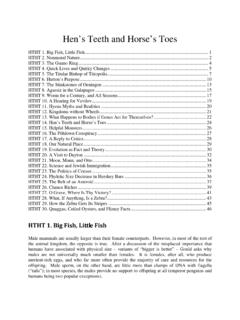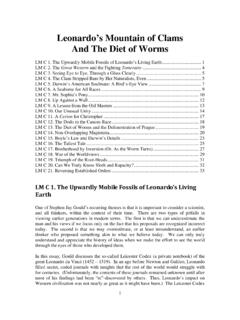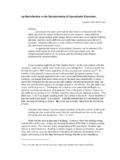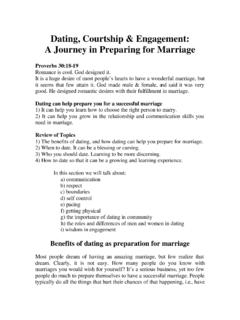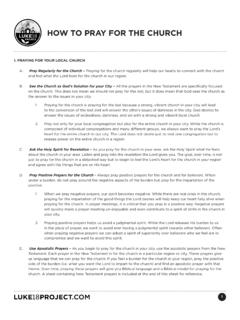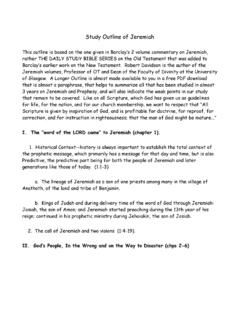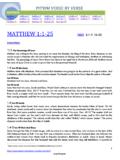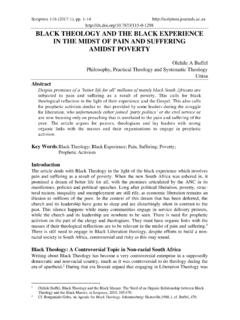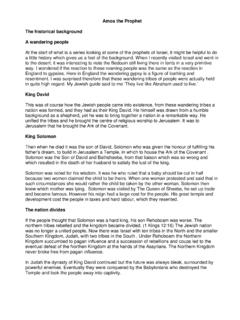Transcription of I Have Landed
1 1 I have Landed IHL 1. I have Landed .. 1 IHL 2. No Science Without Fancy, No Art Without Facts: The Lepidoptery of Nabokov 3 IHL 3. Jim Bowie s Letter and Bill Buckner s Legs .. 4 IHL 4. The True Embodiment of Everything That s Excellent .. 6 IHL 5. Art Meets Science in The Heart of the Andes: Church Paints, Humboldt Dies, Darwin Writes, and Nature Blinks in the Fateful Year of 1859 .. 7 IHL 6. The Darwinian Gentleman at Marx s Funeral .. 9 IHL 7. The Pre-Adamite in a Nutshell .. 11 IHL 8. Freud s Evolutionary Fantasy .. 13 IHL 9. The Jew and the Jewstone .. 16 IHL 10. When Fossils Were Young .. 18 IHL 11. Syphilis and the Shepherd of Atlantis .. 20 IHL 12. Darwin and the Munchkins of Kansas .. 22 IHL 13. Darwin s More Stately Mansion .. 23 IHL 14. A Darwin for All Reasons.
2 24 IHL 15. When Less Is Truly More .. 24 IHL 16. Darwin s Cultural Degree .. 25 IHL 17. The Without and Within of Smart Mice .. 25 IHL 18. What Does the Dreaded E Word Mean Anyway? .. 26 IHL 19. The First Day of the Rest of Our Life .. 28 IHL 20. The Narthex of San Marco and the Pangenetic Paradigm .. 30 IHL 21. Linnaeus s Luck? .. 31 IHL 22. Abscheulich! (Atrocious) .. 34 IHL 23. Tales of a Feathered Tail .. 38 IHL 24. An Evolutionary Perspective on the Concept of Native Plants .. 39 IHL 25. Age-Old Fallacies of Thinking and Stinking .. 41 IHL 26. The Geometer of Race .. 42 IHL 27. The Great Physiologist of Heidelberg .. 44 IHL 28. The Good People of Halifax .. 46 IHL 29. Apple Brown 46 IHL 30. The Woolworth Building .. 47 IHL 31. September 11, 01.
3 47 IHL 1. I have Landed This, Gould tells us, is the 300th and final essay written for his monthly column This View of Life, which has appeared in Natural History magazine since 1974. The essay appears in the December 2000 / January 2001 issue, concluding a run in which he never missed a column deadline. He compares his personal 300-essay streak, over 27 years, to another continuous, unbroken chain of events more than a billion times longer the natural history of life on earth. During this enormous period, life suffered several mass extinctions, but never went out completely; thus, we are the direct biological descendents 2 of an unbroken chain of life dating back more than billion years. Infinite space and eternal time may be beyond our grasp, but life on earth while extraordinarily vast is both finite and, at least to a degree, comprehensible.
4 He expresses his joy in being able to be a part of it, even if only for a geological moment. Writing these monthly essays has played a major role in his life, he adds, and he thanks all of the readers who made this journey with him. He closes this essay, and the series, with two additional stories on the theme of continuity. The first story involves Henrietta Heathorn Huxley, the wife of Thomas Henry Huxley and grandmother of both Aldus Huxley (the author) and Julian Huxley (the biologist). She was born and raised in Australia, and as a young woman met Hal when he visited there as an assistant surgeon (in practice, a naturalist) on the 1846-1850 mission of the Rattlesnake. He was then in his early twenties, and was using some of his time at sea to learn Italian.
5 Nettie gave him a parting gift of a five-volume set of Italian poetry by a Renaissance poet named Tassi; she signed it to him, in part, in remembrance. After five years of separation, she sailed to England and married him; they lived happily and had six children that lived to adulthood. Much later, the very same Tassi collection came up for auction, and Gould successfully acquired it. He tells us in the preface that he was moved to tears by what he found. As an old woman, Nettie passed the same collection from the library of her deceased husband to her grandson Julian, with the same inscription written above the first: In remembrance. Continuity, across a lifetime. The second story is that of his maternal grandfather, who arrived at Ellis Island with his mother and sisters (his father had arrived a year earlier) from Hungary as a 14-year-old in 1901.
6 Gould tells the story of how this young man grew up, met his wife, had children one of whom was his mother and worked his way into the middle class. Gould is the proud owner of what is apparently the first book his grandfather bought after arriving in his new native land: an 1892 edition of Studies in English Grammar by J. M. Greenwood. In it, written in pencil and unsure English, are the words I have Landed September 11, 1901. (He mentioned this story in an earlier essay, and expresses gratitude to a reader a professional genealogist who sent him copies of his father s name on the ship s manifest stored in the Ellis Island archives.) Connecting the legacy of what his grandfather began almost exactly a century ago with his own sequence of essays, he ends his run with the following paragraph, a letter written to the memory of his grandfather: Dear Papa Joe, I have been faithful to your dream of persistence, and attentive to a hope that the increments of each worthy generation may buttress the continuity of evolution.
7 You could speak those wondrous words right at the joy of terror and inception. I dared not repeat them until I could fulfill my own childhood dream something that once seemed so mysteriously beyond any hope of realization to an insecure little boy in a garden apartment in Queens to become a scientist and to make, by my own effort, even the tiniest addition to human knowledge of evolution and the history of life. But now, with my step 300, so fortuitously coincident with the world s new 1,000 and your won 100 [since arriving at Ellis Island], perhaps I have finally won the right to restate your noble words, and to 3 tell you that their inspiration still lights my journey: I have Landed . But I also can t help wondering what comes next!
8 IHL 2. No Science Without Fancy, No Art Without Facts: The Lepidoptery of Vladimir Nabokov Vladimir Nabokov (1899-1977) is considered to be one of the most important literary figures of the twentieth century. His most famous work is the novel Lolita, published in 1955. Nabokov is noted for his detailed descriptions and his literary style, which involves anagrams other forms of wordplay. As it happens, he was also a professional lepidopterist: one who studies butterflies. More specifically, he was a taxonomist specializing in Central American blues, and was a full-time Research Fellow and butterfly curator at Harvard University s Museum of Comparative Zoology for six years (1942-1948). This dual citizenship in the scientific and literary communities attracted Gould s attention.
9 He has argued in several essays [ , LMC 2] that science and art both draw on man s unique creativity, despite the more common view that they are largely distinct. He writes: A set of stereotypes still rules perceptions of otherness in these two domains [the sciences and the arts] .. Scientists are soulless dial-twirlers; artists are arrogant, illogical, self-absorbed blowhards.. I do not wish to forge a false union in an artificial love feast. The two domains differ, truly and distinctly, in their chosen subject matter and established modes of validation. The magisterium (teaching authority) of science extends over the factual status of the natural world, and to the development of theories proposed to explain why these facts, and not others, characterize our universe.
10 The magisteria of the arts and humanities treat ethical and aesthetic questions about morality, style, and beauty.. But many of us who labor in both domains (if only as an amateur in one) strongly feel that an overarching mental unity builds a deeper similarity than disparate subject matter can divide. Human creativity seems to work much as a coordinated and complex piece, whatever the different emphases demanded by disparate subjects.. To Gould, Nabokov represents an excellent example of how the two worlds can exist in a single mind, without conflict. He wrote this essay as part of a catalog on antiquarian books, as opposed to his usual forum of Natural History magazine, in order to target a more humanities-oriented audience.


